- 한국어
- English
- 日本語
- 中文
- العربية
- Español
- Français
- Deutsch
- Pусский
- Tiếng Việt
- Indonesian
|
Monthly KOREA’s April 2020 issue.▶Link to Webzine |
4 Standout Restaurants
Just as food at Korean Buddhist temples offers a window into Buddhist culture, Hansik displays the cultural trait of each era on the Korean Peninsula. Passed from the royal family of the Joseon Dynasty to the public and undergoing multiple transformations prior to the modern era, Hansik encapsulates the Korean way of life. These four restaurants raise understanding of traditional Korean cuisine.
Written by Kim Samuel
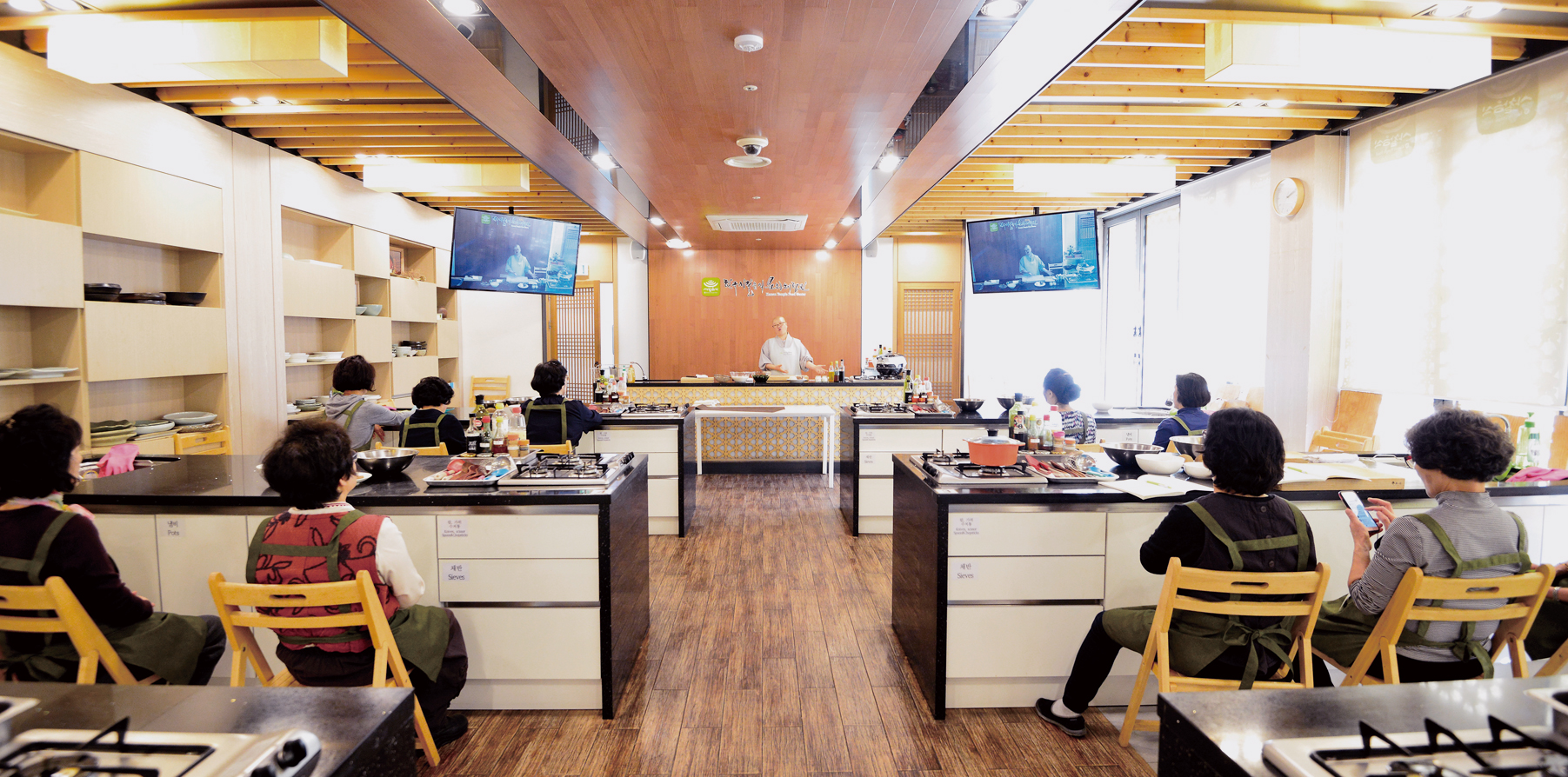
Korean Temple Food Center
Korean Buddhist customs observed in meal preparation and consumption have been cultivated for 1,700 years. While these conventions are typically done deep in rural mountains, the Korean Temple Food Center holds exhibitions and lessons on such food in an urban setting. Commentary and resources include the presentation of recipes for seasonal temple dishes and reenactments of such traditions.
Program offerings range from weekly lessons over a month on the basics of seasonally sourced temple food and single-day lessons on preparing simple dishes to on-demand lessons in making tea confectionary or holding tea time with a monk over a chat. All are conducted under a monk’s supervision, allow a maximum of 24 participants per session and require reservations three days in advance. The event “Let’s Learn About Korean Temple Food” is held Saturdays for foreigners, and the center is closed Mondays.
|
2F New Anguk Building, Yulgok-ro 39, Jongno-gu District, Seoul |
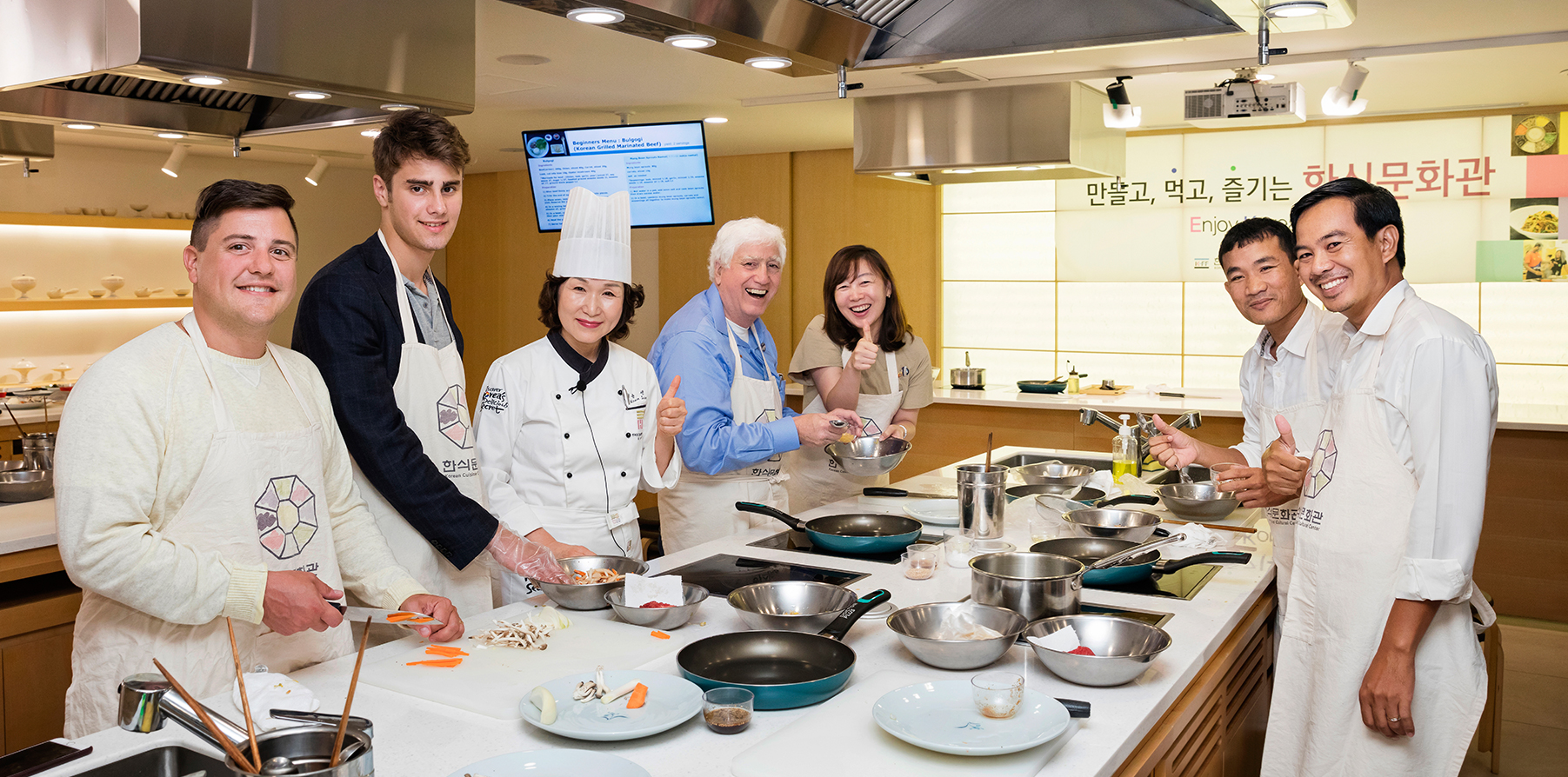
Korean Cuisine Cultural Center
Operated by the Korean Food Promotion Institute, the Korean Cuisine Cultural Center is a cultural complex equipped with space to cook and serve Hansik. Expert instructors engage in culinary storytelling to provide an animated cooking experience that even novices can follow. In addition to an expansive array of Hansik ranging from bibimbap (spicy rice bowl with vegetables), japchae (stir-fried glass noodles and vegetables), tteokgalbi (grilled short-rib patties) and haemultang (spicy seafood stew), lessons on traditional desserts are available. Interpretation in English, Chinese and Japanese can be requested on a reservation basis.
|
4F, K-Style Hub (Korea Tourism Organization’s Seoul office), Cheonggyecheon-ro 40, Jung-gu District, Seoul |
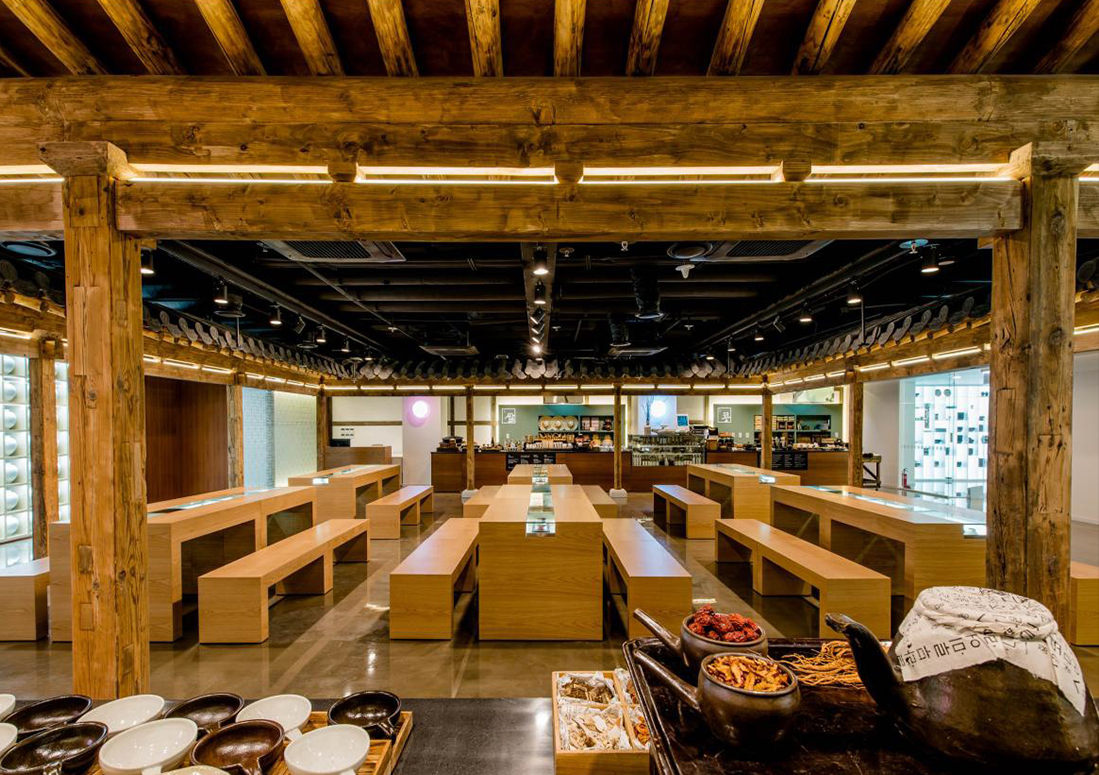
© Korean Cuisine Cultural Center
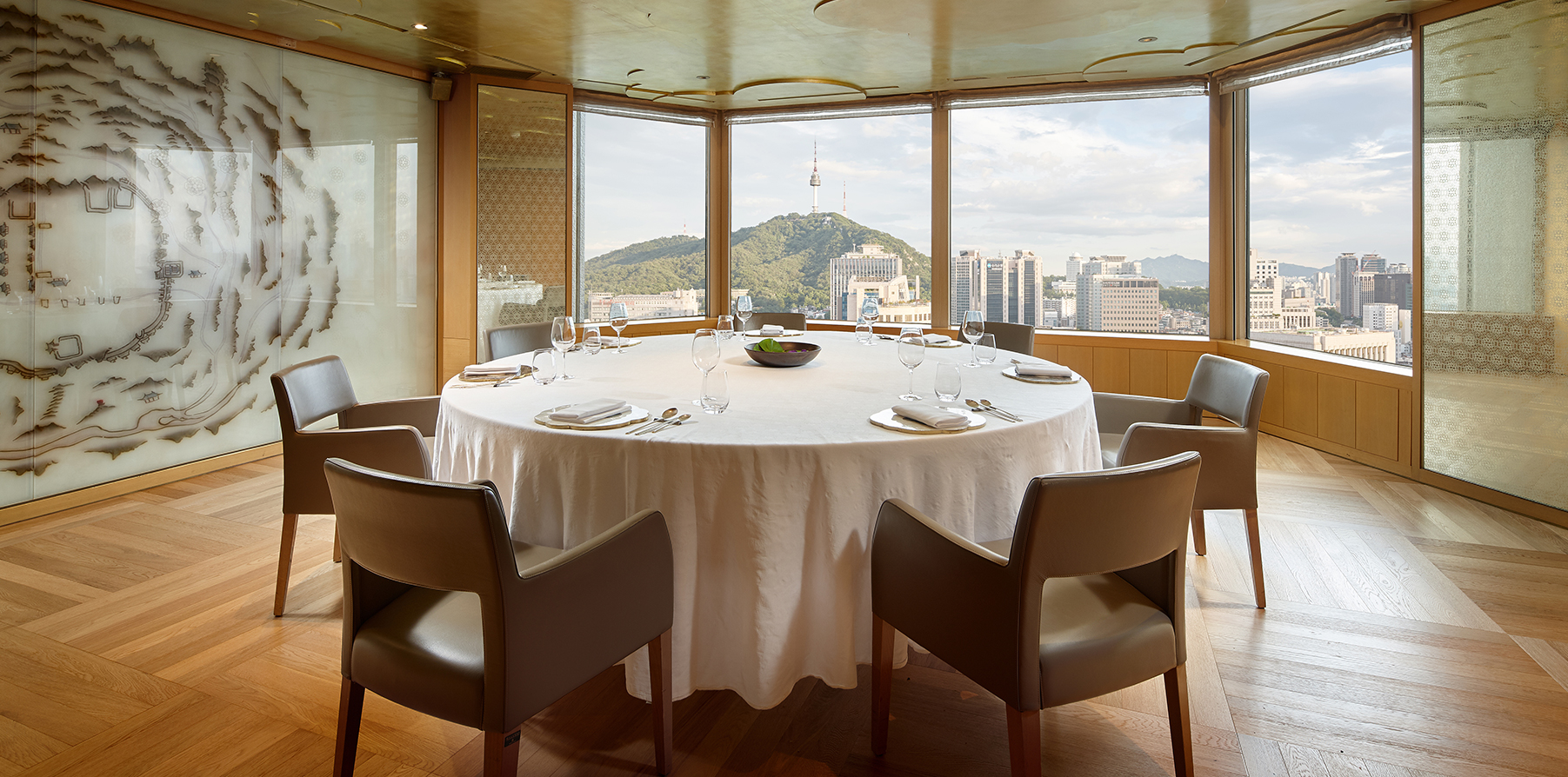
© Lotte Hotel
Mugunghwa
Since its establishment in 1979 with the opening of Lotte Hotel Seoul, Mugunghwa has retained its title as Korea’s oldest “supreme first-class” Hansik restaurant. Its modern reinterpretation of royal cuisine from the Joseon Dynasty era features ingredients of seasonal specialty sourced from all eight provinces on the Korean Peninsula. Each element is treated under the traditional culinary philosophy of considering medicine and food to have shared origins, resulting in dishes that are as healthy as they are tasty.
Pure traditional Hansik is known to spread an array of dishes on a wide tabletop. In contrast, Mugunghwa presents items as part of a course menu. Complementing the food are traditional cutlery and delicate pairings with wine and traditional liquor. The backdrop featuring seasonally varying views of Bukhansan Mountain and the urban lights of Seoul add a pleasant touch to the experience.
|
38F, Lotte Hotel Seoul Main Tower, Sogong-dong, Jung-gu District, Seoul |
|
www.lottehotel.com/seoul-hotel/en/dining/restaurant-mugunghwa.html |
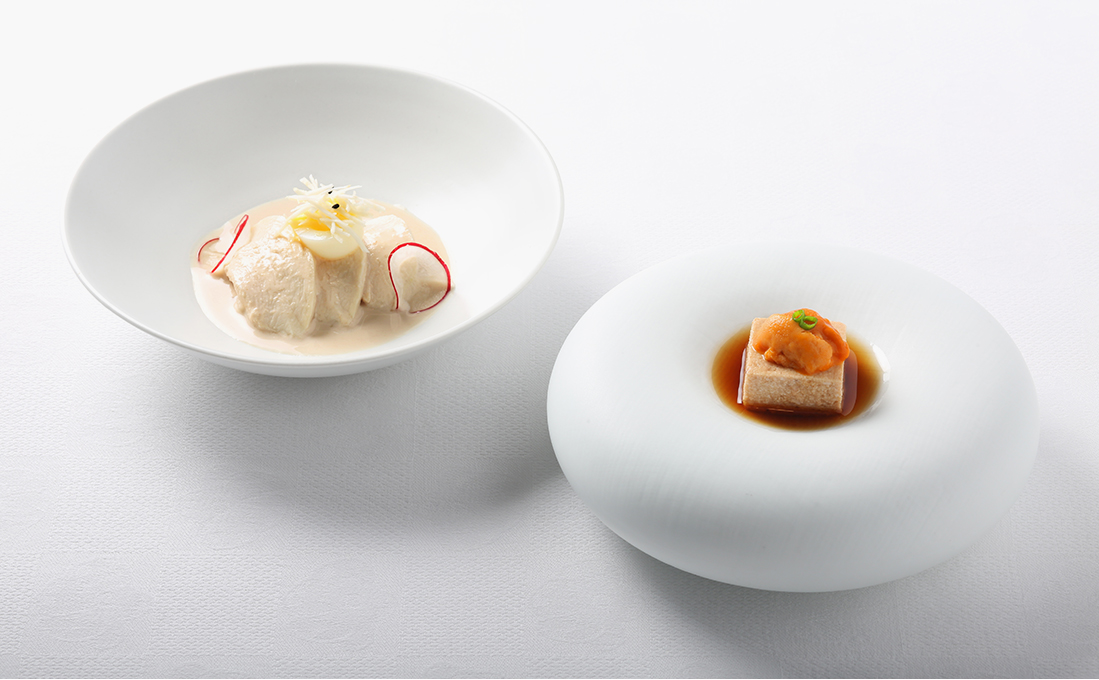
© Lotte Hotel
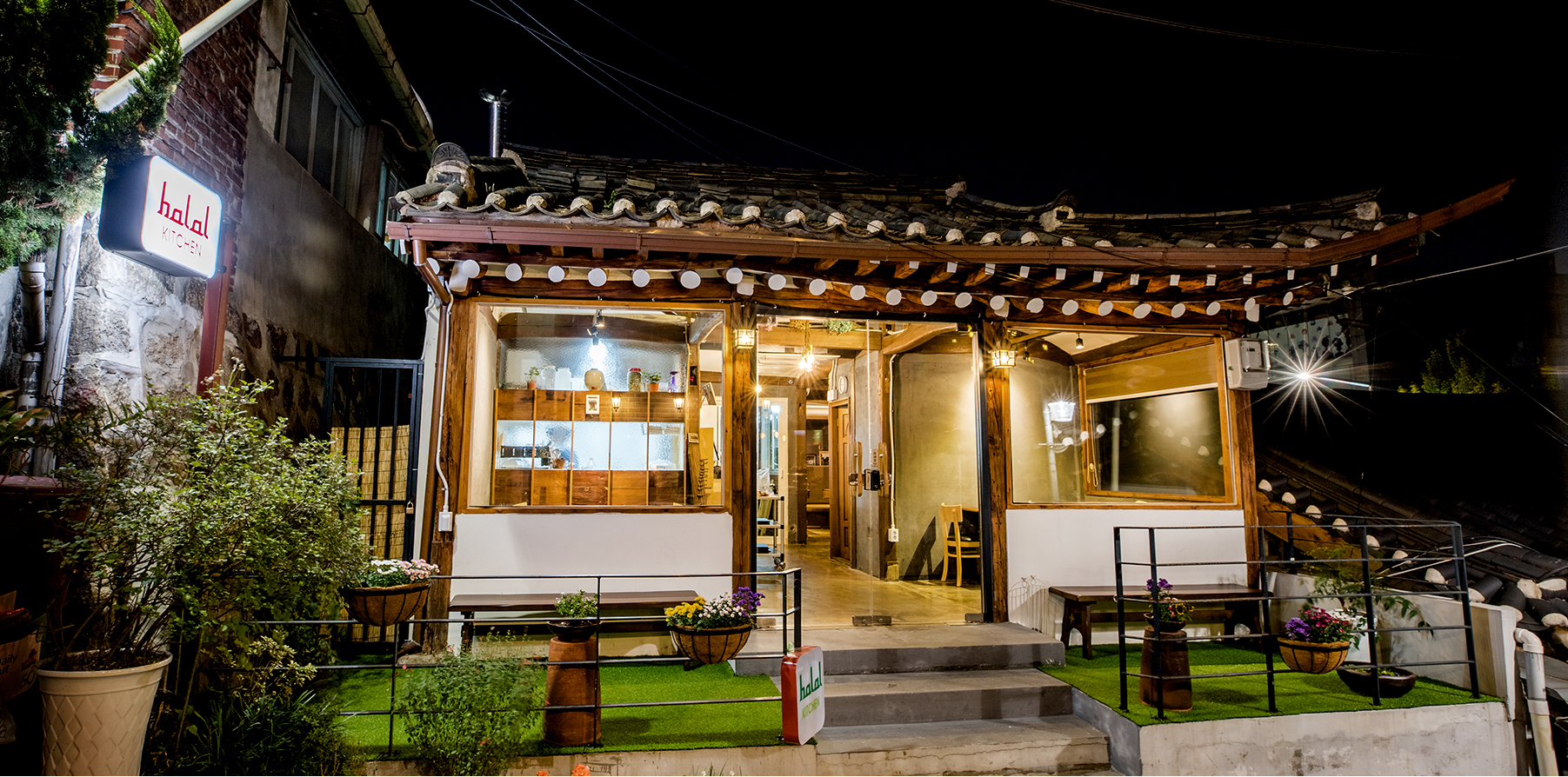
© Halal Kitchen
Halal Kitchen
In its first two years, Halal Kitchen attracted some 52,000 visitors eager to try halal-based Hansik. Delivery is available, and more expedited when ordered over the phone. The restaurant is closed Tuesdays.
|
Samcheong-ro 86-2, Samcheong-dong, Jongno-gu District, Seoul |
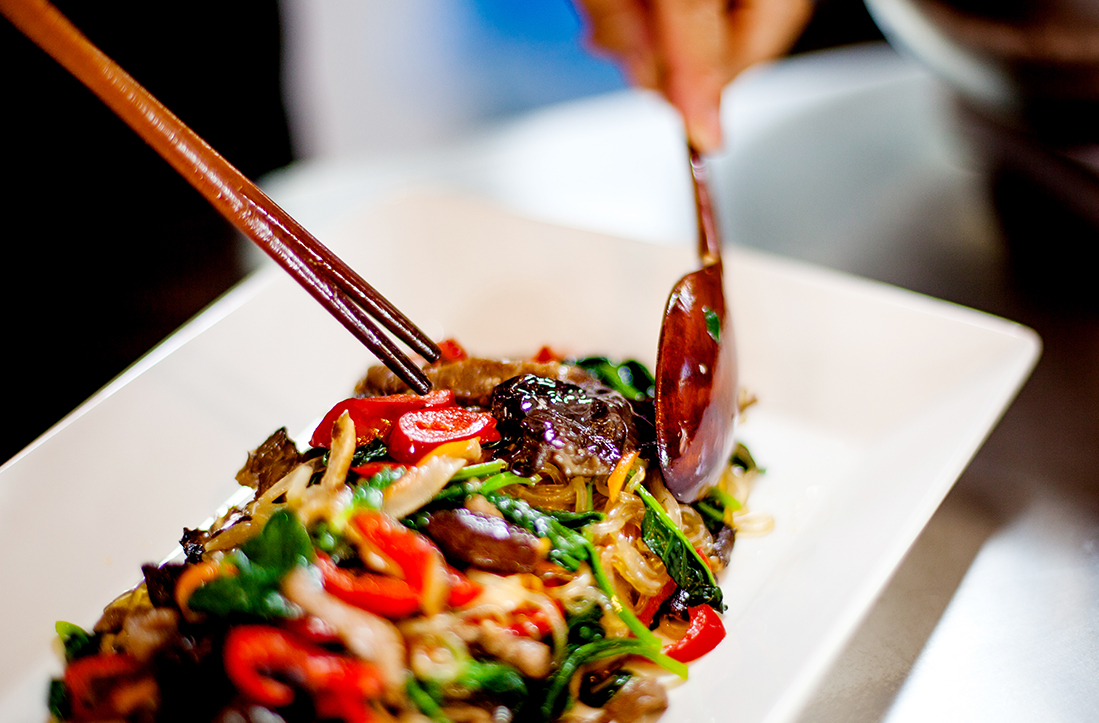
© Halal Kitchen